World’s Greatest Mountain Climber Unveils Stunning New Alpine Museum at 81. In the jagged peaks of Italy’s Dolomites, legendary mountaineer Reinhold Messner has opened his most personal museum yet—a breathtaking tribute to alpine exploration housed inside a repurposed cable car station perched atop Mount Elmo. At 81 years old, the first person to solo climb Mount Everest and conquer all 14 of the world’s highest peaks without supplementary oxygen continues defying expectations with Reinhold Messner Haus, his latest venture celebrating mountaineering’s rich history and uncertain future.
This extraordinary new collection joins seven other mountain museums scattered across South Tyrol’s dramatic landscape, creating what may be the world’s most spectacular network of high-altitude cultural institutions. For travelers seeking adventure intertwined with profound storytelling, Messner’s vision transforms the Italian Alps into an open-air gallery where geology, human ambition, and environmental consciousness collide.
The Legend Behind the Museums: Reinhold Messner’s Extraordinary Achievements
Before understanding the museums, one must appreciate the man who created them. Reinhold Messner’s mountaineering accomplishments read like fiction:
Historic Climbing Milestones:
- 1970: First ascent of Nanga Parbat’s Rupal Face (tragically losing brother Günther in avalanche during descent)
- 1978: First ascent of Everest without supplementary oxygen alongside Peter Habeler
- 1980: First solo ascent of Mount Everest, cementing legendary status
- 1986: Became first person to climb all 14 peaks over 8,000 meters (26,247 feet) without oxygen
- 1989-1990: Crossed Antarctica on foot, pulling sled unaided
- 1993: Traversed Greenland via similar expedition
This German speaker from Brixen in South Tyrol has authored 80 books documenting white-knuckle expeditions that pushed human endurance to absolute limits. “I wasn’t worrying about yesterday or the past. I was living in the future,” Messner reflected on his career’s relentless forward momentum.
Reinhold Messner Haus: A Sustainable Mountain-Top Treasure
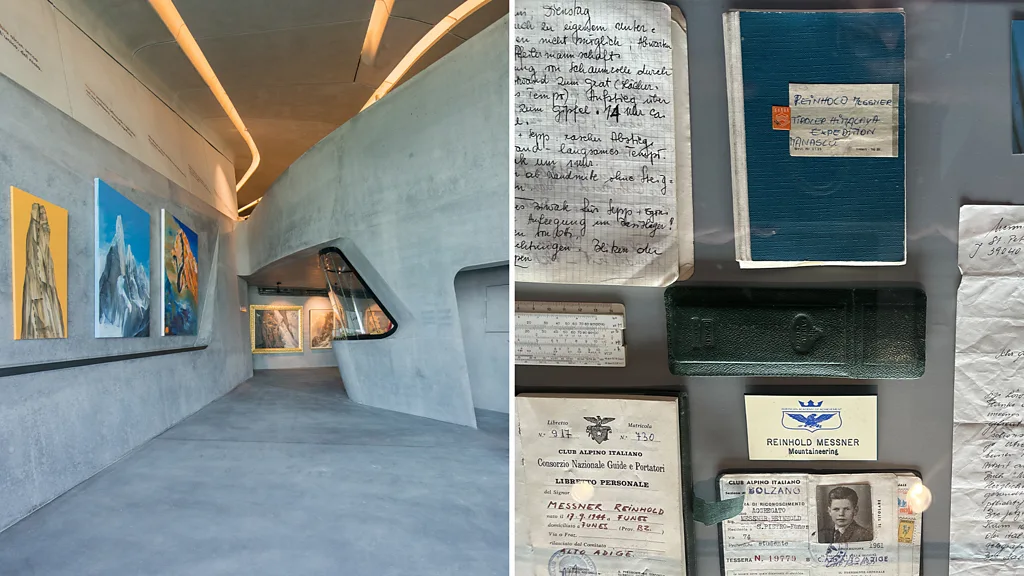
Reinhold Messner Haus cable car station museum Mount Elmo Sexten Dolomites Italy
The newest addition to Messner’s museum empire opened summer 2024 in the 3 Zinnen Dolomites region, developed with his wife, Diane, amid surging tourism interest. Rather than constructing a conventional building, they transformed a decommissioned cable car station on Mount Elmo above Sexten village that had been marked for demolition.
“Sustainability in action,” Diane explained. “Everything was already here, so we didn’t use new materials or resources.”
What Makes This Museum Unique:
The repurposed depot-turned-visitor-center occupies a dramatic plateau location, with the Messners maintaining a private one-bedroom apartment while opening the bulk of the space to the public. Unlike traditional museums confined to town centers, this collection sits among the very peaks it celebrates.
Museum Highlights:
- Traditional adventurer’s study filled with unsorted expedition archives
- Black-and-white photographs spanning decades of mountaineering
- Original maps, charts, and expedition documents
- Climbing ropes, ice axes, and polar sleds from historic journeys
- Himalayan paintings and Tibetan prayer wheels
- Hindu figurines and Mahakala masks from global travels
- Letters and diary entries revealing intimate expedition details
The emotional centerpiece features documentation of Messner’s relationship with younger brother Günther, killed in a 1970 Nanga Parbat avalanche—a tragedy that has haunted the climber daily for over 50 years.
For perspectives on cultural heritage preservation and sustainable tourism development, observers note how Messner’s approach combines conservation with accessibility.
The 180-Degree Panorama: Architecture Meets Nature
The museum’s architectural highlight is the converted cable car platform offering jaw-dropping 180-degree Dolomite views. From this theatrical balcony, visitors witness limestone ramparts cut with steeples and sawtooth ridges rising over forest-green valleys—what Messner calls “the most beautiful mountains in the world.”
A striking 1.9-meter (6-foot-2-inch) sculpture by Slovakian artist Štefan Papčo depicts Messner during his 1978 solo Nanga Parbat ascent—hooded, gloved, stooping, stoic—frozen in a moment of supreme determination.
Overhead, steel gantries display inspirational phrases in Italian, German, and English: “Endless thought, open mind.” “Ever onward with a slow step.” These messages transform the space into more than a museum—it becomes a launching point for future adventures.
The Messner Mountain Museum Network: 7 Extraordinary Locations
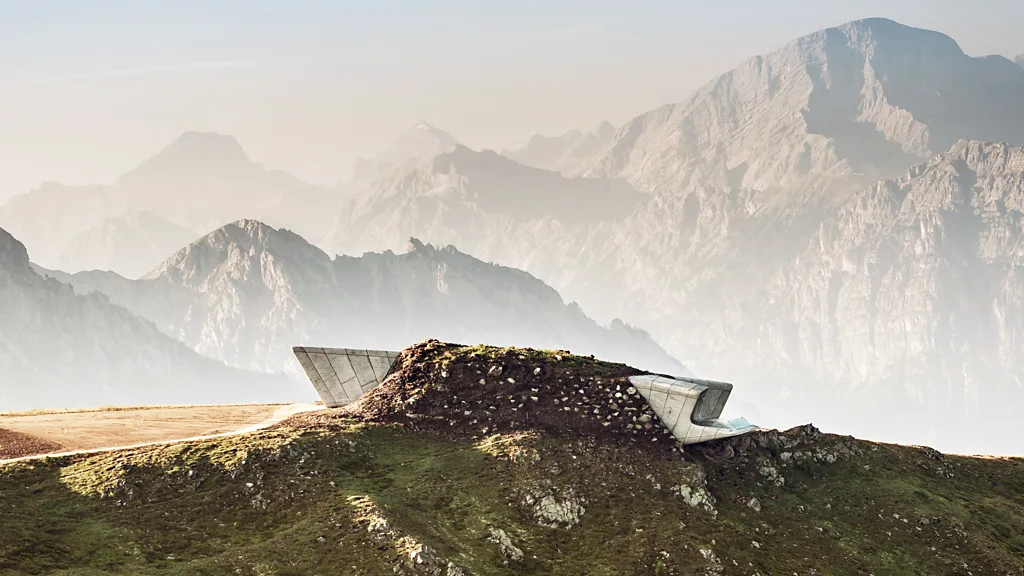
Messner Mountain Museums network South Tyrol alpine culture exhibitions Dolomites Italy
Between 1995 and 2015, Reinhold founded six additional museums across South Tyrol, creating a constellation of mountain culture institutions. Though he has since transferred management to daughter Magdalena Messner, these attractions retain his family name and visionary approach to high-altitude storytelling.
1. MMM Corones: Zaha Hadid’s Architectural Masterpiece
Perched at 2,275 meters (7,463 feet) near Kronplatz summit in Puster Valley, this museum represents British-Iraqi architect Zaha Hadid’s final alpine project. The late architect created a masterpiece of non-linear cast concrete architecture featuring:
- Cavern galleries mimicking rock formations
- Fragmented geometries echoing ice structures
- Natural balcony positioning with panoramic vistas
- Integration with surrounding Dolomite landscape
The dramatically situated galleries explore mountaineering culture and alpinism through exhibitions that whisper rather than shout Messner’s personal achievements.
2-7. Additional Museum Locations
The remaining Messner Mountain Museums occupy equally dramatic positions:
- Windswept mountain tops challenging visitors’ determination
- Fortified medieval castles from Bolzano to Bruneck
- Remote high-altitude locations accessible only to committed travelers
Each venue houses themed exhibitions on mountain culture, anthropology, and humanity’s evolving relationship with extreme environments.
Why the Dolomites Are Perfect for Mountain Museums
The Dolomites occupy northeastern Italy near the Austrian border—”hard country for an easy life,” characterized by:
Geological Drama:
- Stark pinnacles and stone cathedrals
- Fiercely savage vertical cliffs
- 250+ million years of geological transformation
- Constant landslides and avalanches
- Edges, crags, and plateaus supporting minimal vegetation
World War One Heritage:
The mountains feature extensive via ferrata (iron roads)—climbing paths of steel cables, ladders, and bridges originally built as improbable escape routes during World War One. These historic routes now provide access for modern adventurers.
Dual Appeal:
South Tyrol tourism consistently grows because the region offers:
- Entry-level hiking for casual mountain enthusiasts
- Technical mountaineering for experienced climbers
- Cultural attractions like Messner’s museums
- Alpine villages with Austrian-Italian fusion character
Preserving Mountaineering Traditions for Future Generations
At 81, Messner shows no signs of retirement. “It is my dream and challenge to keep the original spirit of mountaineering alive,” he declared. “To pass my knowledge onto the next generation – that is why we have created this new house.”
Mountaineering’s Evolution:
Messner emphasizes that adventuring as we understand it is relatively recent—perhaps only 200 years old. Yet humanity’s relationship with mountains stretches back millennia, and he worries modern conveniences threaten authentic wilderness connections.
“The relationship between man and nature has changed, and it’s important the historic traditions of mountaineering are not forgotten,” he explained. His museums serve as physical manifestations of this preservation mission.
Climate Change Documentation:
The museums also chronicle environmental transformation. Glass cabinets display:
- Photographs of retreating glaciers
- Documentation of changing climbing routes
- Evidence of warming impacts on alpine ecosystems
- Historical comparisons showing dramatic landscape changes
These exhibits position mountaineering museums as climate change awareness centers, linking human achievement with environmental responsibility.
Planning Your Visit to Messner’s Alpine Museums
Getting There:
Reinhold Messner Haus:
- Location: Mount Elmo plateau above Sexten village
- Region: 3 Zinnen Dolomites, South Tyrol
- Access: Cable car or hiking trails
- Best season: Summer months (June-September)
MMM Corones:
- Location: Kronplatz summit, Puster Valley
- Elevation: 2,275 meters (7,463 feet)
- Access: Cable car from valley floor
- Architectural significance: Zaha Hadid design
Visitor Tips:
- Weather preparedness: Mountain conditions change rapidly
- Layered clothing: Temperature varies significantly with elevation
- Photography equipment: Panoramic views demand quality cameras
- Time allocation: Allow 2-3 hours per museum
- Physical fitness: Some locations require moderate hiking
- Multi-museum passes: Available for network access
Regional Tourism Growth:
According to South Tyrol’s tourist board, visitor numbers consistently increase as travelers discover this synthesis of natural beauty, cultural heritage, and mountaineering history. The region’s trilingual character (Italian, German, Ladin) adds unique cultural dimensions.
The Spiritual Dimension: Mountains as Meeting Places
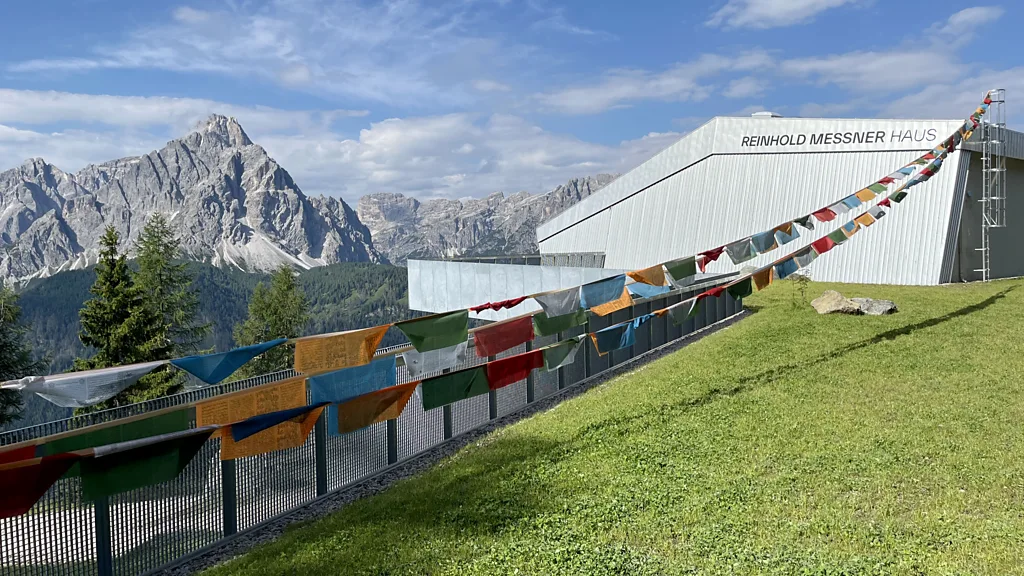
Tibetan prayer wheels Himalayan paintings mountain spirituality cultural artifacts Messner collection
What distinguishes Messner’s museums from conventional exhibitions is their spiritual and cultural breadth. Alongside climbing equipment, visitors encounter:
- Tibetan prayer wheels from Himalayan expeditions
- Mahakala masks representing Buddhist protective deities
- Hindu figurines collected during Indian mountain travels
- Uplifting paintings celebrating human-nature connections
“We wanted to provide a platform for a better understanding of our relationship with nature,” Diane explained. This approach transforms museums into cultural and artistic meeting places rather than simple equipment showcases.
The presence of these artifacts acknowledges that mountaineering transcends physical achievement—it represents spiritual journeys, cultural exchanges, and philosophical contemplations about humanity’s place within vast natural systems.
Messner’s Legacy: More Than Summit Records
While Messner’s climbing records remain unmatched, his true legacy may be these museum spaces that inspire future adventurers while documenting mountaineering’s past. The exhibitions reveal:
- Frozen fingertips and frostbitten toes showing expedition costs
- Expedition documents detailing planning and logistics
- Personal letters humanizing legendary achievements
- Diary entries capturing moment-by-moment experiences
“So many bitter memories,” Messner mumbled when viewing artifacts from his brother’s fatal 1970 avalanche. This vulnerability—acknowledging mountaineering’s tragic dimensions alongside triumphs—gives the museums profound emotional depth.
Conclusion: Where Adventure Meets Preservation
Reinhold Messner’s mountain museum network represents an unprecedented fusion of adventure tourism, cultural preservation, environmental awareness, and architectural innovation. By repurposing cable car stations, occupying medieval castles, and commissioning world-class architects like Zaha Hadid, he has created institutions as dramatic as the peaks surrounding them.
At 81, Messner continues plotting new schemes from these liminal spaces between earth and sky. His museums don’t merely preserve mountaineering history—they actively inspire the next generation of adventurers while warning about climate change threats to alpine ecosystems.
For travelers drawn to the Dolomites’ savage beauty, these museums offer something beyond spectacular views: they provide context, inspiration, and profound reflections on humanity’s eternal fascination with mountains. As Messner’s steel gantry phrases proclaim: “Endless thought, open mind.” “Ever onward with a slow step.”
In these museums perched among Italy’s most dramatic peaks, adventure isn’t just remembered—it’s continually reimagined for whatever challenges the future holds.


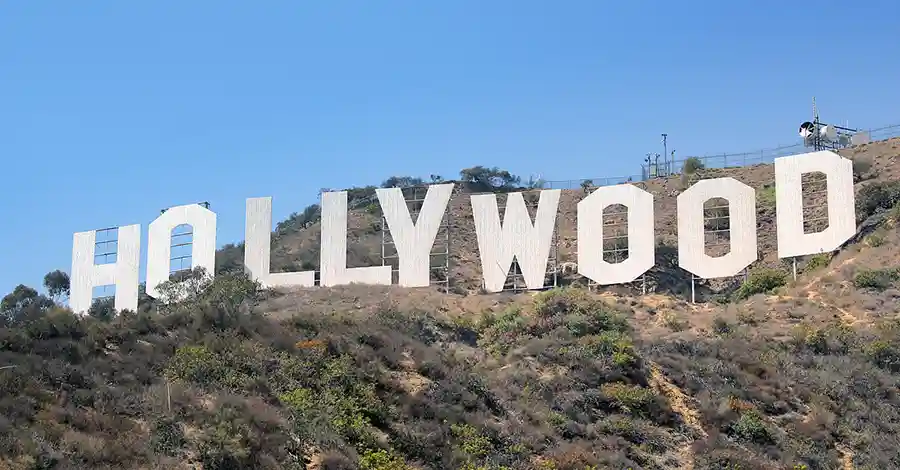



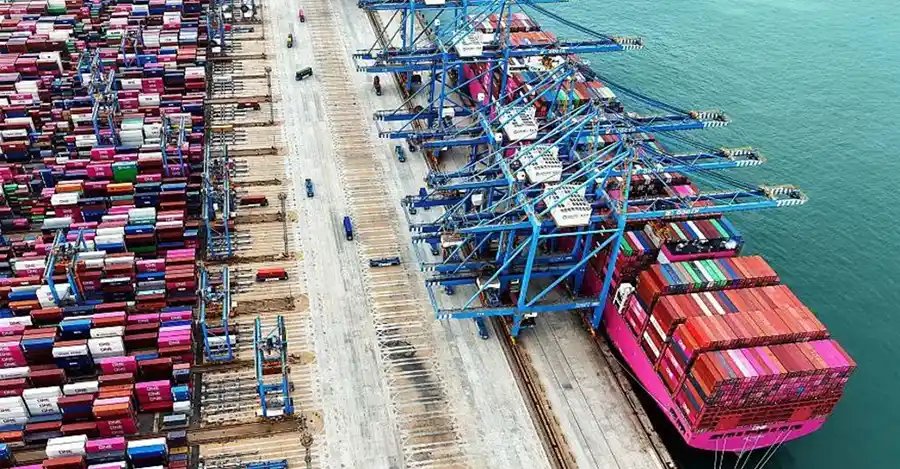







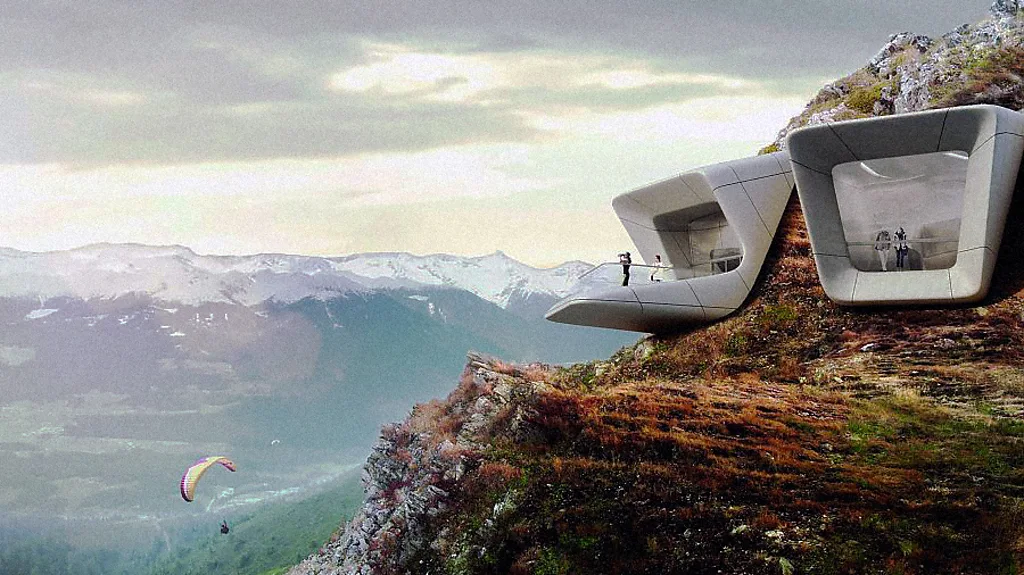
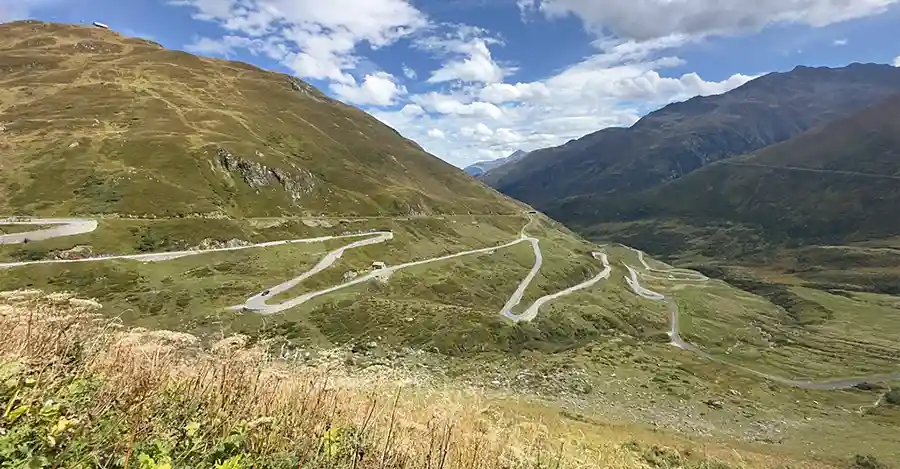
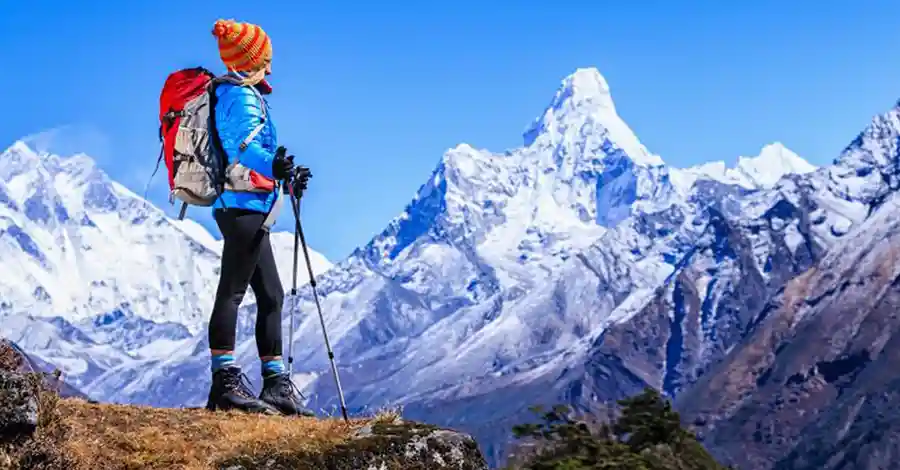
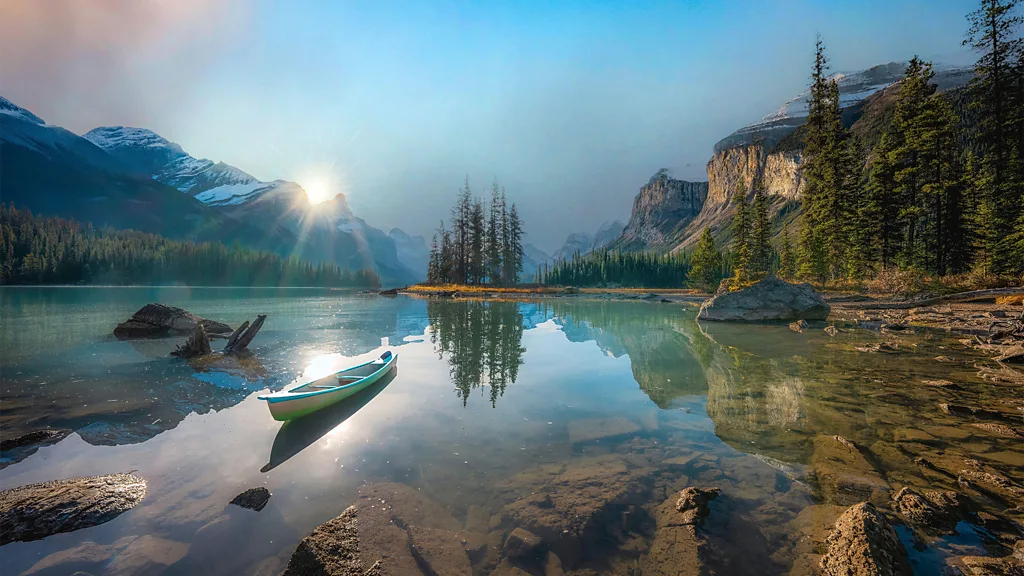



Comments